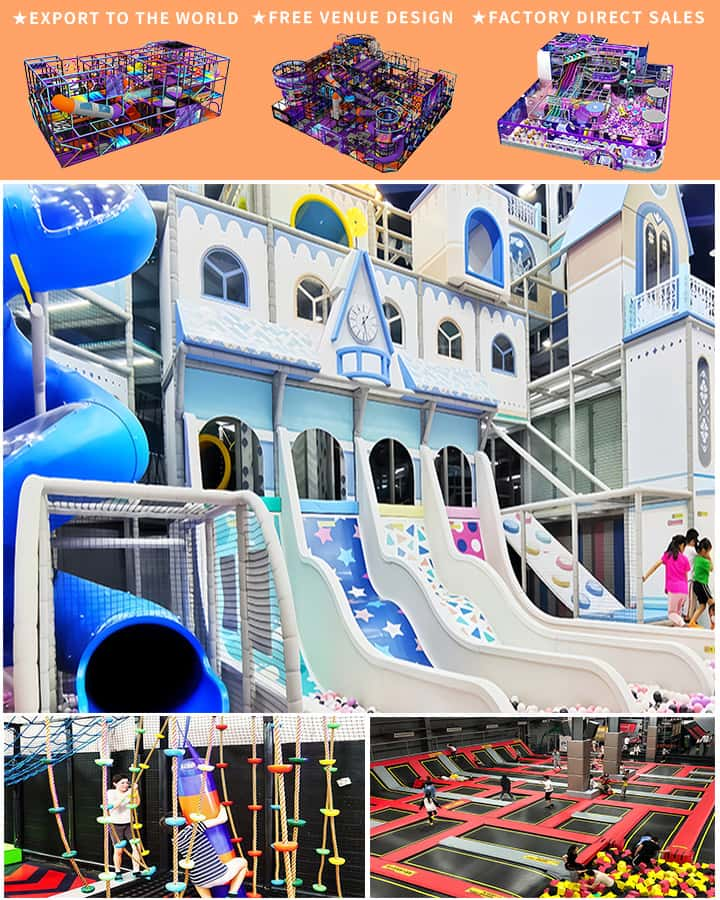Creating the ideal playground for kids requires careful planning, creativity, and attention to safety. A well-designed playground not only provides endless fun but also promotes physical activity, social interaction, and imaginative play. Here are some key elements to consider when setting up a playground that will be both enjoyable and safe for children.
1. Safety First
The foremost aspect of any playground setup is ensuring it is safe for children to use. Safety measures include:
- Impact-Absorbing Surfaces: Use materials like rubber mats, sand, or wood chips under play equipment to cushion falls.
- Soft Edges: Equipment with rounded edges prevents cuts and scrapes.
- Proper Installation: Follow manufacturer guidelines to ensure all structures are securely anchored and stable.
- Regular Inspections: Regularly check the playground for any wear and tear, loose parts, or potential hazards.
2. Age-Appropriate Equipment
Different age groups have varying needs and abilities, so it’s essential to provide equipment suitable for each age range:
- Toddlers (Ages 1-5): Simple structures such as small slides, climbing ramps, and spinner bowls.
- School Age (Ages 6-12): More challenging climbing walls, seesaws, and larger slides can cater to their adventurous spirits.

- Teens (Ages 13+): Higher, more complex structures like basketball hoops, advanced climbing frames, and zip lines.
3. Variety of Activities
An engaging playground offers a wide range of activities to keep kids entertained:
- Physical Activities: Swings, seesaws, monkey bars, and climbing structures encourage physical fitness.
- Imaginative Play: Themed playhouses, tunnels, and interactive panels stimulate imagination and creativity.
- Group Play: Structures designed for cooperative play, like merry-go-rounds or group swings, foster social skills.
- Quiet Areas: Benches and shaded areas allow children to rest and take in their surroundings peacefully.
4. Accessibility and Inclusivity
Inclusivity ensures all children, regardless of their abilities, can enjoy the playground:
- Wheelchair Accessible Play: Features such as ramps and transfer stations make it easier for children in wheelchairs to participate.
- Sensory Play: Elements like musical instruments, textured surfaces, and sensory paths cater to children with sensory processing needs.
- Clear Pathways: Wide, clear pathways enable easy navigation for children with mobility challenges.
5. Durability and Maintenance
Choosing high-quality, durable materials reduces maintenance costs over time:
- Weather-Resistant Materials: Wood treated for outdoor use, galvanized steel, and recycled plastics stand up better against the elements.
- Low Maintenance Surfaces: Surfaces like artificial turf or bonded rubber require less frequent upkeep compared to natural grass or dirt.
- Easy Cleaning: Smooth, non-porous surfaces are easier to clean and sanitize, keeping the playground hygienic.
6. Environmental Considerations
Incorporating eco-friendly designs helps educate children about environmental stewardship:
- Recycled Materials: Use recycled plastic or reclaimed wood in playground construction.
- Native Plants: Surround the playground with native plants and trees that provide shade and habitat for local wildlife.
- Eco-Toys: Include nature-inspired toys made from sustainable materials to encourage an appreciation for the environment.
Conclusion
Designing a kids’ playground is a rewarding endeavor that benefits both the community and its youngest members. By prioritizing safety, inclusivity, variety, durability, and environmental responsibility, you can create a space where children can grow, explore, and have fun safely. Thoughtful planning and execution ensure that your playground becomes a cherished space for generations to come.




